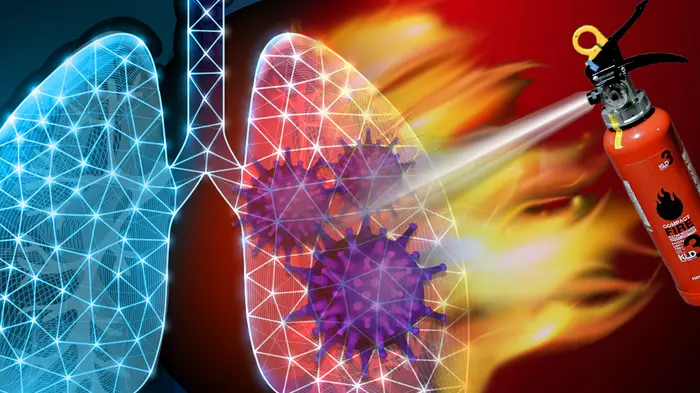Headline: Unveiling the Deadly Mechanism Behind COVID-19 Lung Damage: Columbia Researchers Identify Ferroptosis as the Culprit
Researchers at Columbia and the Columbia University Irving Medical Center have made a significant discovery in the fight against severe cases of COVID-19, revealing that ferroptosis, a unique form of cell death, is the primary cause of the extensive lung damage observed in critically ill patients. This groundbreaking finding paves the way for the development of targeted therapies that could potentially save lives by halting the destructive process of ferroptosis.
The Mystery of COVID-19 Lung Damage
In severe cases of COVID-19, patients often experience a range of life-threatening conditions, such as pneumonia, inflammation, and acute respiratory distress syndrome, all of which stem from extreme damage to the lungs. Until now, the underlying cause of these wide-ranging reactions has remained a mystery, leaving medical professionals with limited options to combat the disease effectively.
Professor Brent Stockwell, one of the study’s lead authors, emphasized the significance of this discovery, stating, “This finding adds crucial insight to our understanding of how COVID-19 affects the body that will significantly improve our ability to fight life-threatening cases of the disease.”
Ferroptosis: A Double-Edged Sword
Ferroptosis, first identified by Professor Stockwell in 2012, is an unusual form of cell death characterized by the collapse of the outer fat layers of certain cells. Unlike the most common type of cell death, which occurs in both disease contexts and normal processes like aging, ferroptosis has been shown to play a role in various neurodegenerative diseases, such as Parkinson’s, Alzheimer’s, and Lou Gehrig’s disease.
While ferroptosis can be destructive, recent studies suggest that it could also be harnessed for therapeutic purposes. Inducing ferroptosis intentionally could potentially counteract diseases like cancer, where uncontrolled cell growth poses a significant threat. Conversely, the ability to inhibit ferroptosis could provide doctors with new tools to combat unwanted cell death, as observed in COVID-19 lung disease.
As researchers continue to unravel the complexities of ferroptosis and its role in various diseases, the potential for developing targeted therapies grows. Professor Stockwell expressed his optimism, saying, “We’re hopeful that these important new findings could improve our ability to confront this pernicious disease, which, in too many cases, still diminishes health outcomes and results in death.”
The Columbia study’s groundbreaking findings mark a crucial step forward in the ongoing battle against COVID-19, offering a glimmer of hope for those suffering from severe lung damage caused by the virus. As the scientific community continues to build upon this knowledge, the prospect of more effective treatments and improved patient outcomes draws ever closer.


